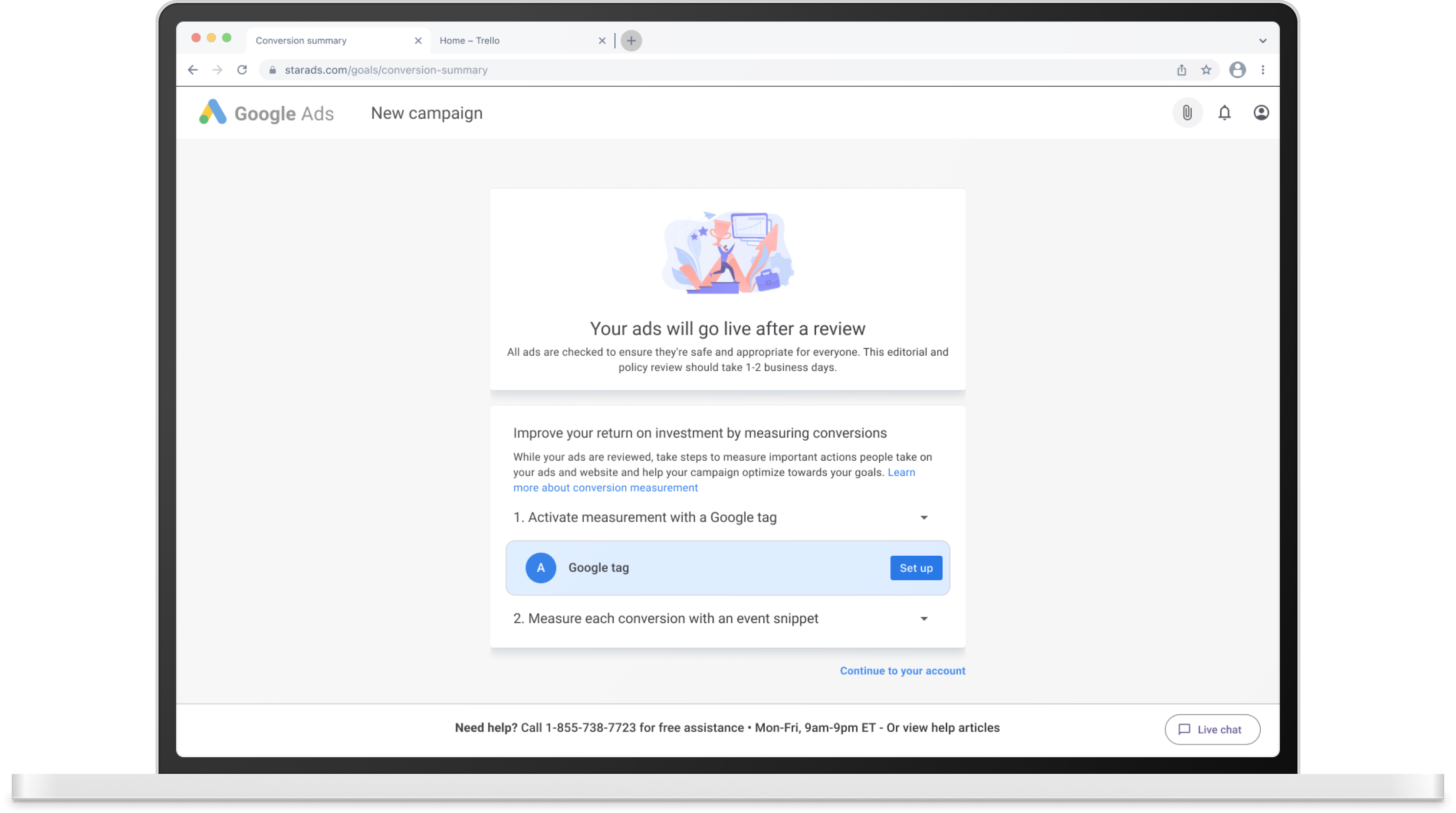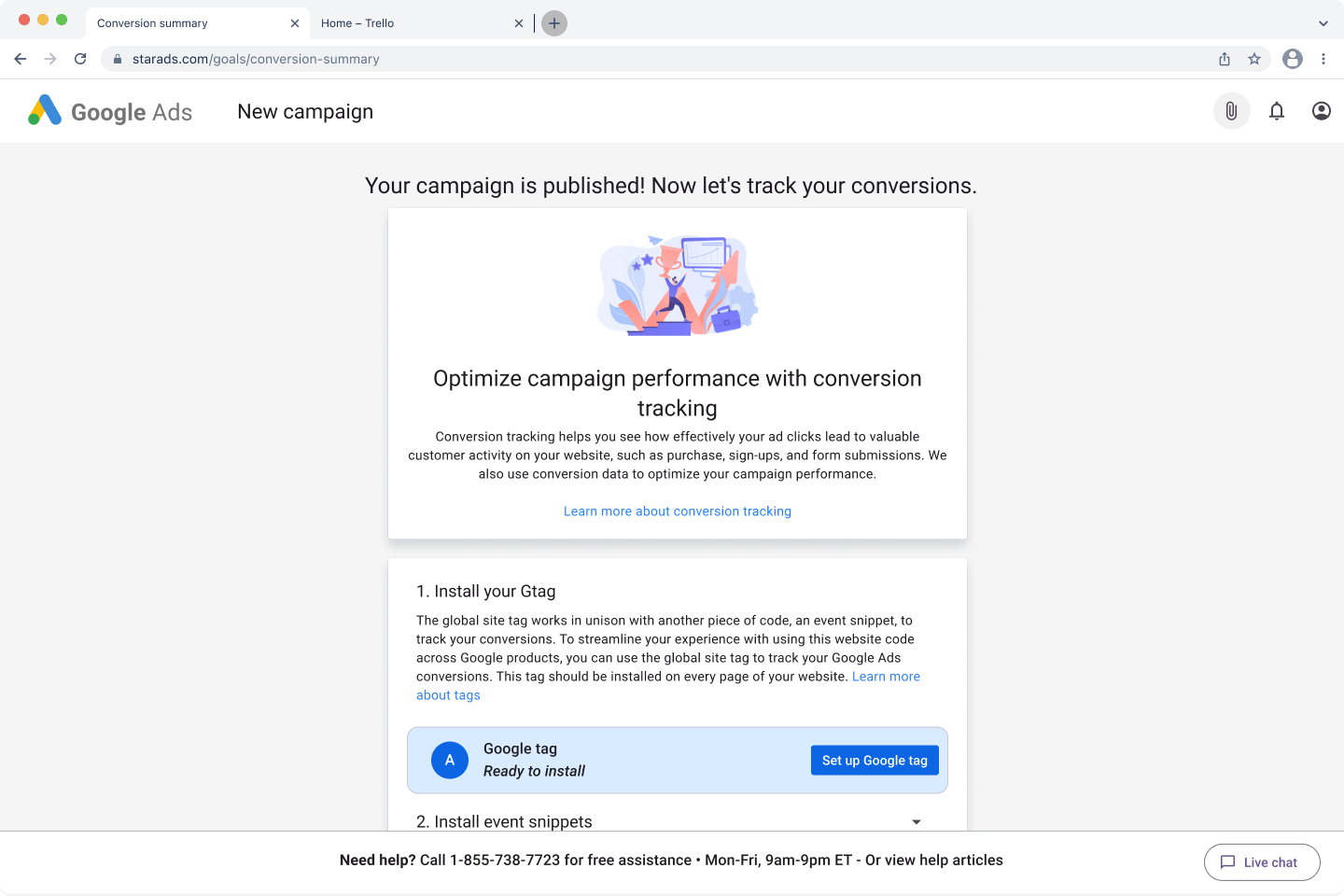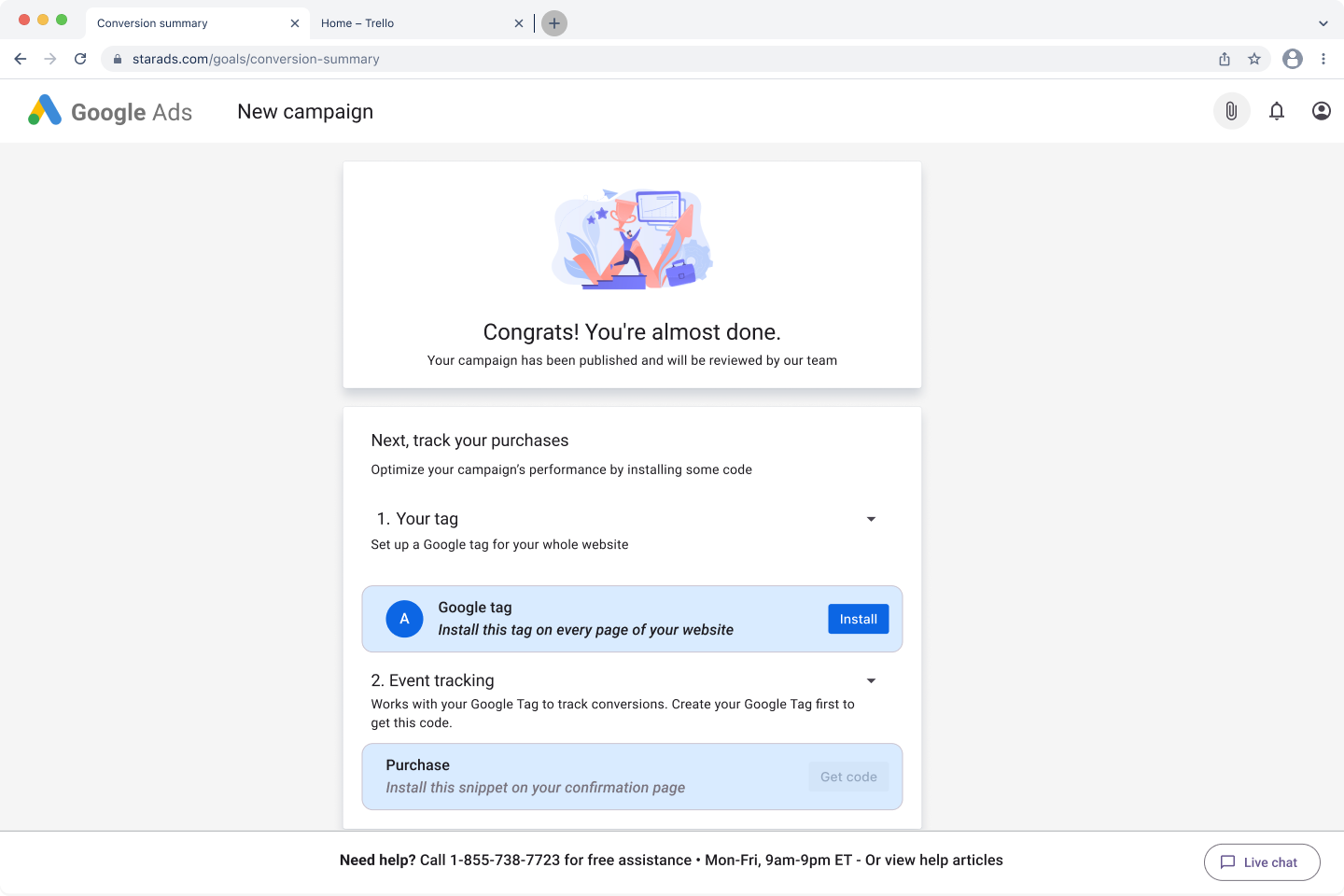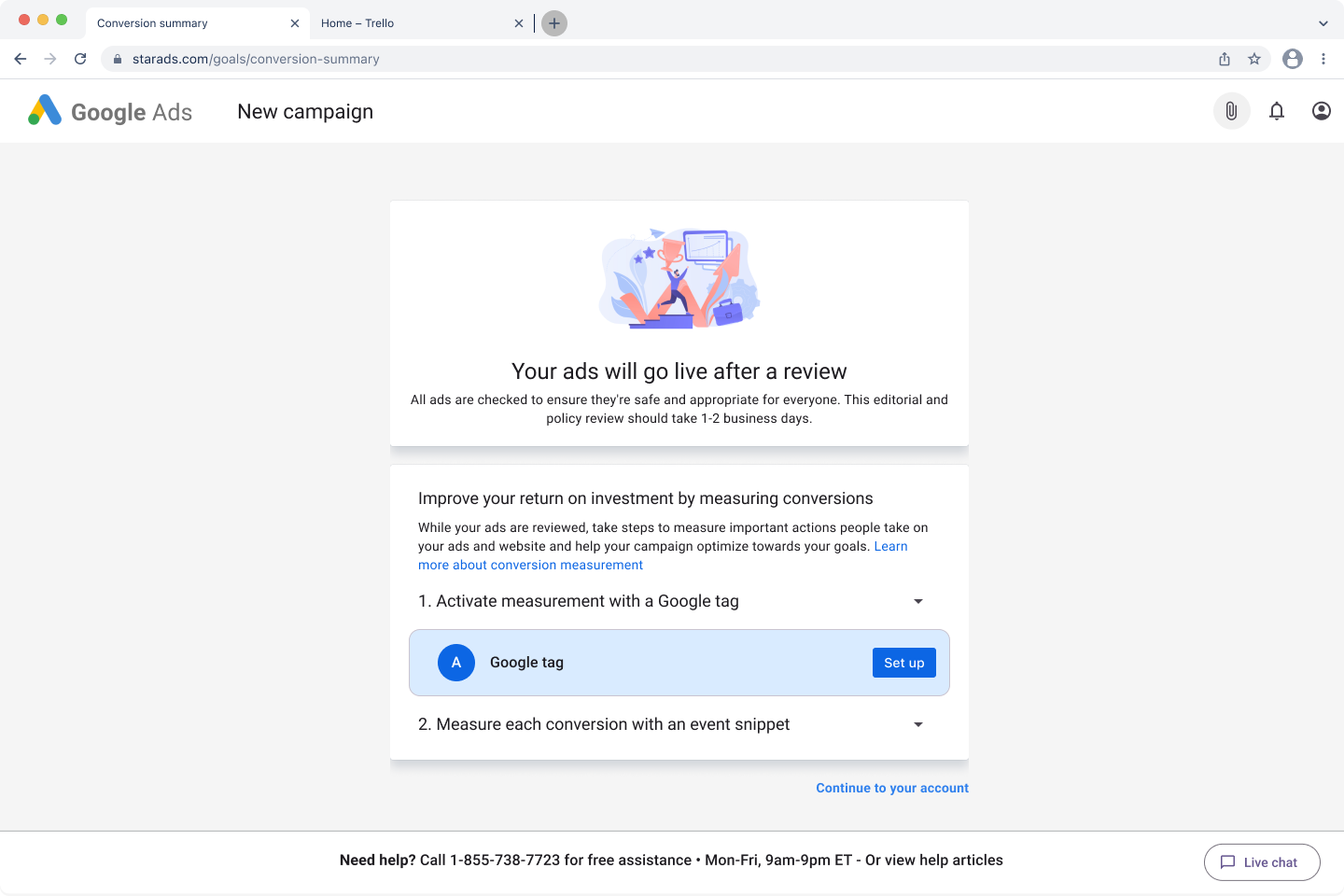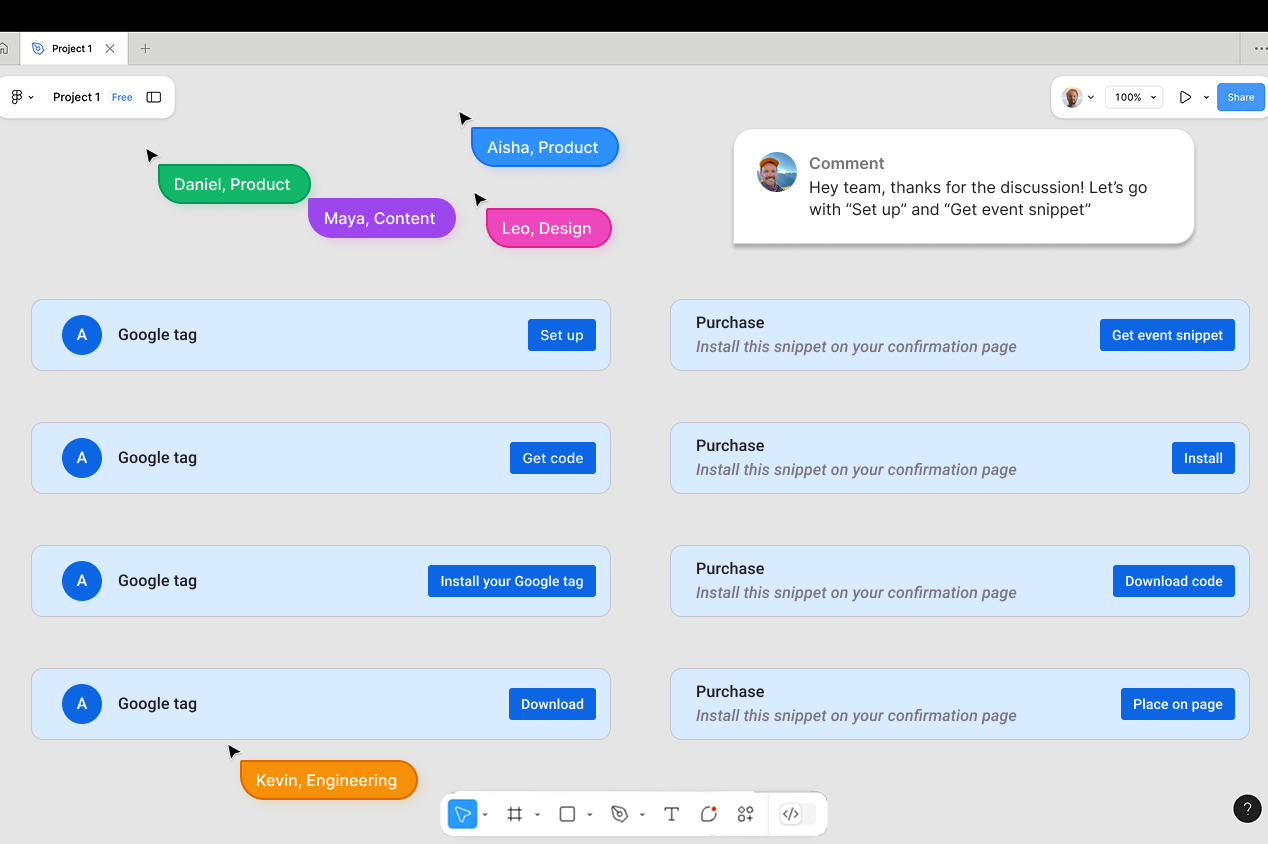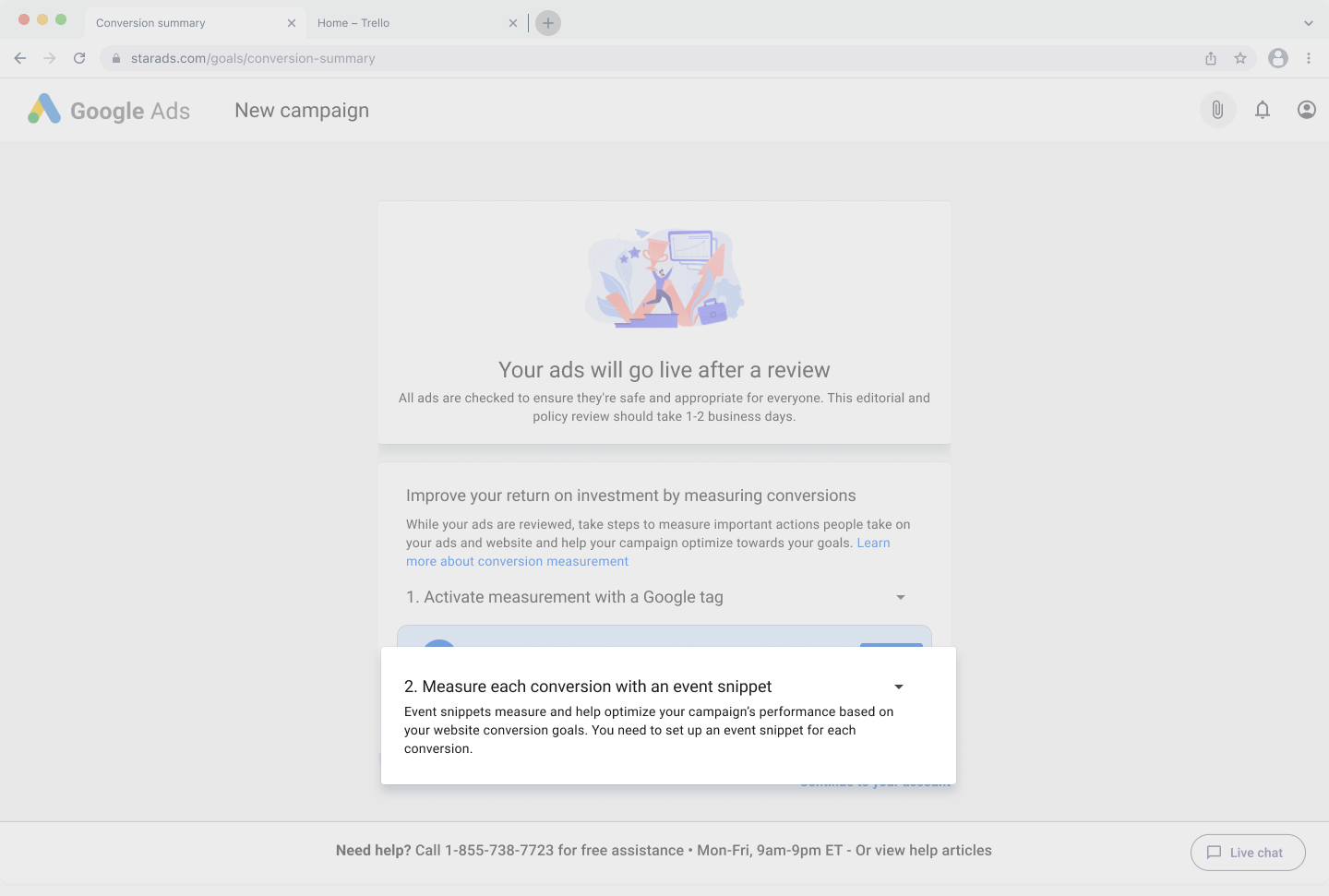This conversion measurement page lets advertisers set up conversion tracking during onboarding, ensuring accurate reporting and optimal campaign performance from day one.
Advertisers need to measure their conversions. Without a proper setup, they won’t understand their return. Yet, the setup process wasn't straight forward. It was buried in a discrete section, full of technical jargon, and lacked guidance advertisers needed.
To improve this setup process, several teams came together to run an experiment. We surfaced the conversion measurement setup in onboarding—bringing this critical step into a more prominent place. By meeting users where they were already taking action, we transformed a frequently skipped step into a natural part of campaign setup.
As the content designer, I simplified complex technical language, clarified the value of conversion tracking, and created a guided experience that gave first-time users confidence to complete setup successfully.
Team
UX Designers, Product Managers, Software Engineers, and Program Managers
Timeline
July 2022 to Oct 2022
Company
Google, Google Ads
Our content design principles
As we iterated on this project, we kept coming back to these things that mattered most.
One thing at a time
Prevent overwhelming people by simplifying. Break down tasks, hide details with progressive disclosure, and minimize jargon.
Do the work for them
Automate where possible. Pre-fill information to minimize manual effort.
Assume they’re new
Using simple language, intuitive instruction, and contextual help benefits all, especially novice users.
Refining content hierarchy
My initial approach included all the information users might need directly on the page. But after exploring this option, I realized we could streamline the narrative and significantly reduce cognitive load.
Initial mockups from designer.
I thought a celebratory message would be motivating, but research quickly shot that down. People thought 'Congrats!' meant their campaigns were already live, which was completely wrong. This insight led to a complete rethink of our messaging strategy.
Initial attempt at streamlined copy with tag and tracking terminology to be verified.
I initially added a celebratory message to build momentum, but research discussions revealed a critical issue—this messaging gave the false impression that campaigns had already launched. This insight led to a complete rethink of our messaging strategy.
Congrats! You're almost done.
Your campaign has been published and will be reviewed by our team.
Too vague about timeline and mixed messaging (congrats vs. "almost done")
Your campaign is published!
Now let's track your conversions.
Unclear about review process; users were confused about next steps
Your ads will go live after a review
All ads are checked to ensure they’re safe and appropriate for everyone. This editorial and policy review should take 1–2 business days.
Clear expectations, transparent process, specific timeline
A few iterations of the main headline and subheader copy.
The final design uses clear, direct language to explain what advertisers should expect, building trust while considering the full journey of tasks they need to accomplish.
Launched copy with reduced jargon and cohesive narrative across dialogue boxes and headlines.
Finding and alinging on the CTAs
Different variations of the same CTA from the product and testing phases.
Leveraging prior research, I discovered that "Set up" and "Get event snippet" resonated strongly with advertisers. These action-oriented CTAs clearly communicated what users needed to do while avoiding technical jargon that might cause hesitation.
This seemingly small decision had a significant impact—clear CTAs reduced decision paralysis and helped advertisers move confidently through the setup process.
Working out the jargon
While working on this experience, I kept one thing in my mind. What did the user need to know to take action? Why did the user even care about taking action?
An important place this thought should be alleviated is in the directional copy in the tags and snippets. Without setting these up correctly, the user would not see the results in their campaign. This approach—explaining the "why" alongside the "what"—helped advertisers understand not just what they were doing, but why it mattered for their business.
Tag copy
Install your Google tag
The global site tag works in unison with another piece of code, an event snippet, to track your conversions. To streamline your experience with using this website code across products, you can use the global site tag to track your conversions. This tag should be installed on every page of your website. Learn more about tags
Too wordy and repetitive; confusing explanation of relationship between global tag and event snippets
Your tag
Works with your Google Tag to track conversions. Create your Google Tag first to get this code.
Too brief and vague; inconsistent terminology (Google Tag vs Your Tag); unclear purpose
Activate measurement with a Google tag
A Google tag allows you to measure activity on your website. You need to do this before individual event snippets can start measuring conversions.
Clear, concise explanation of purpose; establishes proper sequence (Google tag before event snippets); action-oriented language
A few iterations of the headline and subhead copy for the Star tag.
Event snippet copy
Event tracking
Works with your Google Tag to track conversions. Create your Google Tag first to get this code.
Too technical and assumes prior knowledge; unclear relationship between Google Tag and event snippets
Install your event snippets
Adding a Google Ads event snippet ensures precise tracking of user actions, such as form submissions or purchases, by firing a JavaScript code when these events occur. This data is sent to Google Ads for conversion tracking, enabling you to attribute actions to campaigns, optimize bids, and use features like Smart Bidding.
Overly technical explanation that overwhelmed users; too much detail for initial setup step
Measure each conversion with an event snippet
Event snippets measure and help optimize your campaign’s performance based on your website conversion goals. You need to set up an event snippet for each conversion.
Strikes balance between clarity and completeness; explains purpose without technical jargon; actionable next step
A few iterations of the headline and subhead copy for the event snippet.
The experiment worked. More people actually completed the conversion setup, and they did it correctly. We showed when you make something less confusing, people can actually use it.
We significantly improved the accuracy of their conversion tracking and increased successful setup completion rates.
This project reinforced several key insights:
- Meeting users in their natural workflow dramatically improves adoption
- Technical processes can be made approachable through thoughtful content design
- Small language changes—like simplified CTAs—can have outsized impact
Working with several different teams on this was tricky—everyone had opinions about what should be included. But keeping the focus on 'will this help someone who's never done this before?' usually got us to the right answer.
